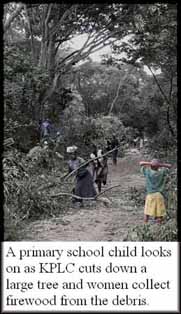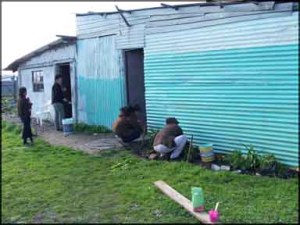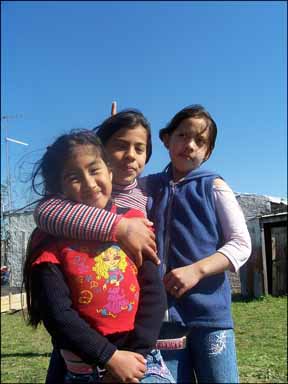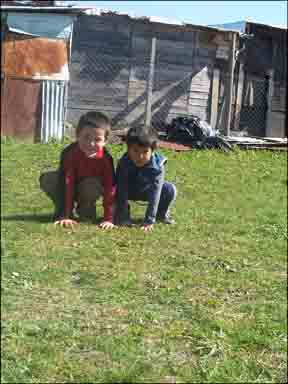 Western Kenya is one of the most densely populated rural areas in the world, putting tremendous pressure on natural resources in the region. In Kakamega district, agricultural expansion, cattle grazing, fuel wood collection, and logging have reduced the once mighty indigenous rainforest to only 240 square kilometers. This trend is likely to continue, it seems, despite efforts by government and non-government agencies to combat forest destruction.
Western Kenya is one of the most densely populated rural areas in the world, putting tremendous pressure on natural resources in the region. In Kakamega district, agricultural expansion, cattle grazing, fuel wood collection, and logging have reduced the once mighty indigenous rainforest to only 240 square kilometers. This trend is likely to continue, it seems, despite efforts by government and non-government agencies to combat forest destruction.
For almost one year now, I have been working with a local environmental conservation group in the southern part of the Kakamega Rainforest. Despite the unfortunate political conflict earlier this year, I was able to work with my organization to research and develop programs that address deforestation and simultaneously address the needs of the community. In particular, we developed a fuel briquette initiative to reduce the demand for firewood that is collected from the forest. Fuel briquettes are made from everyday commercial and agricultural residues and can be used as a replacement for traditional sources of energy. The system has been successfully implemented in other parts of East Africa and will certainly benefit the communities living in and around the Kakamega Rainforest. In July, we held a comprehensive workshop to train community members to make and use fuel briquettes. There was a tremendous amount of enthusiasm and support for the project.
That same month, however, the Kenya Power and Lighting Company was expanding its rural electrification program to include the communities living around the lower half of the forest. In less than three weeks, and without much warning, a major section of the forest had been cleared to make way for telephone poles and overhead electric wires. Acres of indigenous forest were lost, forming small forest islands that are unable to maintain a significant level of biodiversity. In one instance, where there was a choice between indigenous land and plantation land, the indigenous land was cleared while the plantation land remained unaffected for no apparent reason other than shear convenience. The most devastating part of this all was the fact that only a handful of people raised any voice of concern, and only after the trees had been felled. I think everybody was happy to have open access to firewood and timber and even I myself was excited at the prospect of electricity. But all of this made me reflect on my own work in the forest and the value of small-scale environmental conservation programs in the face of larger-scale development issues. The immediate needs of the community seem to be more numerous and more varied than could be addressed by any one strategy for forest protection. Moreover, the pace of development in the region, in terms of infrastructural improvements and changing land-use patterns, seems to be too rapid to sustainably coexist with the forest. Though what we saw with the rural electrification program in the Kakamega forest represents unnecessary destruction caused by a hasty, careless, and close-minded approach to development. The desire to bring electricity to the region overwhelmed the need for careful sustainable planning to implement the project. In order for environmental conservation to work, we need to take time and create innovative strategies which allow for human development, but which also protect our natural resources. But who are we to deny electricity to people who have waited so long to reap the benefits of industrialization? Similarly we might ask, who are we to deny agricultural land to those who choose a subsistence lifestyle? These are not question to which I, or anybody else for that matter, have complete and unarguable answers. Finding creative ways to combat deforestation caused by fuelwood extraction is part of the solution, but without a comprehensive approach to environmental management, it appears the fate of the forest is uncertain.



